It's 9am on a Tuesday - you're knee-deep in an ocean of playdough infused carpet, paint-covered aprons, and a table full of what started out as a creative invitation to explore texture and mark making in clay but has now turned into wet lumpy splodges all over the table and onto the floor . In the beautiful chaos, you notice 3 year old Tara adding the finishing touches to a drawing outside on the verandah tables. She seems very intent on getting something just right and it’s obviously important to her.
You make a mental note to take a closer look and jot this down as an observation when you get a chance.
But the hours slip by in a flash, and you’re well aware of the challenges - trying to observe each child meaningfully while also engaging and interacting, planning activities that nurture individual needs, interests and development, then documenting it all so you can analyse the learning taking place. It’s a lot of work.
What if an AI Chat Assistant could help take some of the load off your shoulders?
Sounds futuristic, doesn't it? But this is no distant dream; it's the reality we're stepping into with tools like ChatGPT Vision.
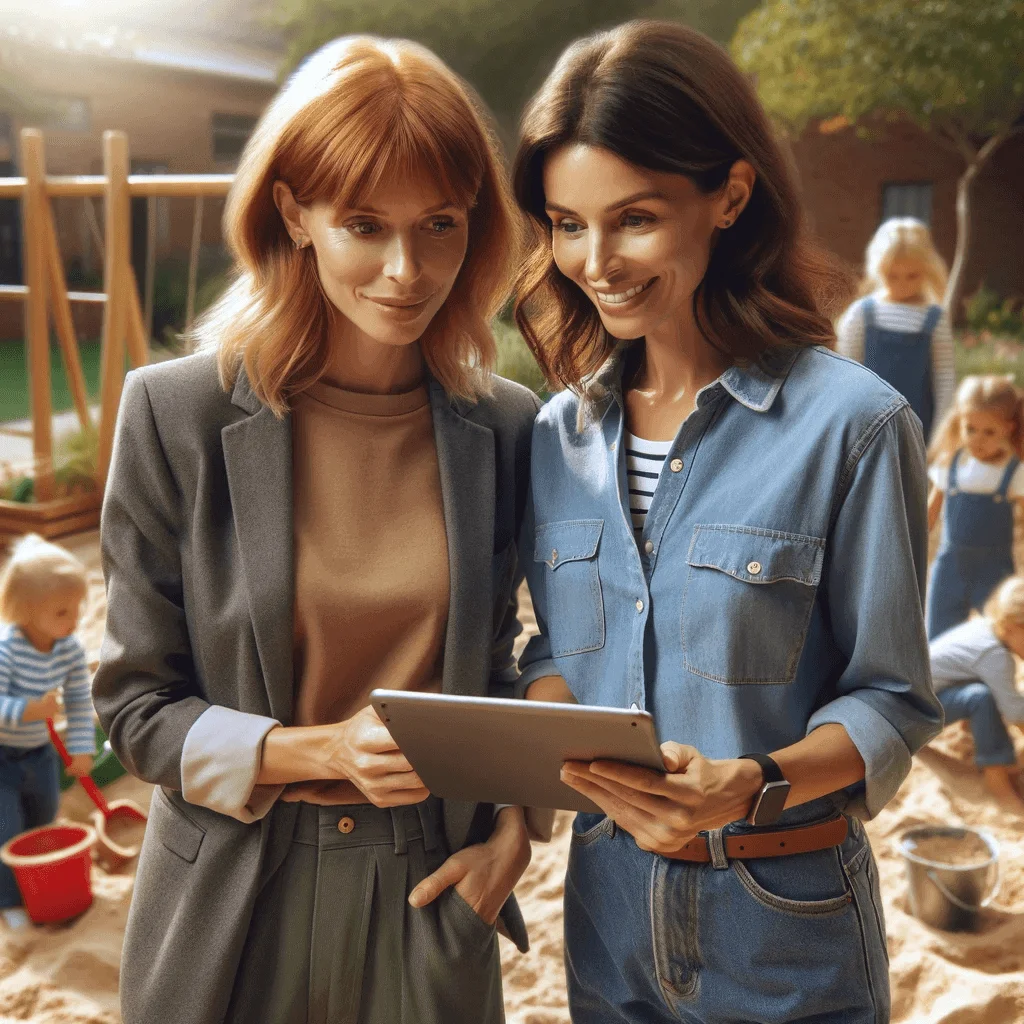
Emerging AI vision tools like ChatGPT Vision allow you to quickly analyse children’s drawings, play experiences, and anecdotal or learning story observations in seconds.
But wait, before you ponder if robots are taking over our profession and get ready to dismiss this post because it’s about AI, let's pause.
Because this isn't a tale of machines replacing the human touch. Instead, it's a story of collaboration, where technology improves on our skills and knowledge as educators.
This isn't about replacing your expertise and knowledge as an early childhood trained professional - it's about working smarter together.
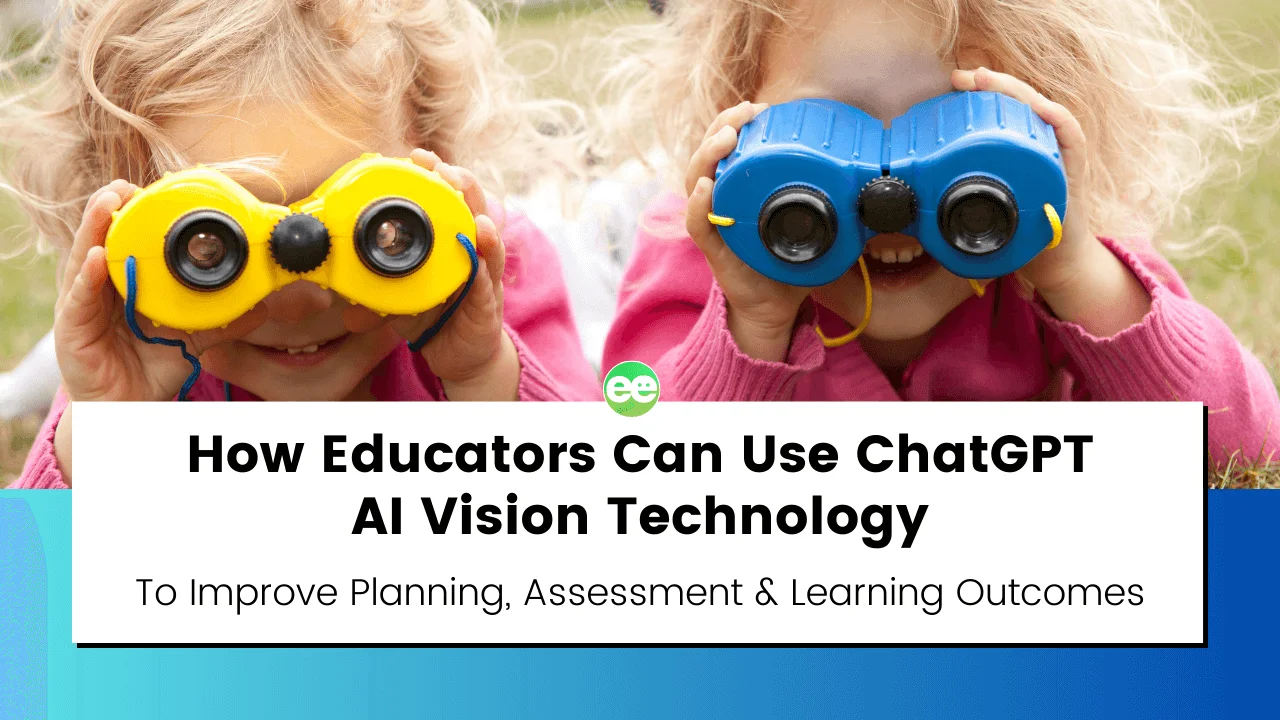
Keep Reading To Discover How AI Assistants Like The New ChatGPT Vision Can Help Educators...
...Analyse and expand on our observations
...Support our ongoing planning cycle
...Give us more meaningful and helpful insights into each child's unique learning journey
Gone are the days when you'd have to set aside your lunchtime or take work home just to analyse this observation and others.
With tools like ChatGPT Vision, you know you can easily delve into what this means for the child's development later just by uploading an image, perhaps during the children's nap time, and it will only take you seconds.
Sounds futuristic, doesn't it? But this is no distant dream; it's the reality we're stepping into with tools like ChatGPT Vision.
And there’s no need to be an artificial intelligence expert or computer scientist.
You just need to be open to new learning and ideas…I’ll walk you through everything you need to know to use ChatGPT Vision in this article - I’ll even show you how simple the process can be by sharing my videos of my screen.
Because, if you’re anything like me, sometimes you just need to see something with your own eyes to better understand it so you can then confidently practise this new skill on your own.
So come with me as I explore how this new AI chatbot feature can help you guide each child’s unique learning journey…without needing to spend your weekends catching up on paperwork to make it happen!

What Is ChatGPT Vision AI Technology?
Picture having a friendly assistant by your side, available anytime to help with your documentation by analysing drawings, play setups or observations and then provide you with interpretations, feedback and reflections. It's almost like having an educator superpower!
Let me introduce you to ChatGPT Vision...
This new AI tool can offer feedback on uploaded images in seconds - no fancy equipment or complex training required. It's part of the Open AI ChatGPT platform, specially designed to interpret visuals.
How It Works
You simply provide ChatGPT Vision with a photo or image.
There are many use cases for all types of professions but in the context of helping our role as educators, we could upload a photo of a child’s artwork, an invitation to play setup, learning environment equipment or materials, even an observation document (if this also includes photos of the child you'll want to blur the faces first before you upload).

ChatGPT Vision scans the visual input and provides analysis on things like:
The tool can pick up on patterns and 'aha moments' that even educators with years of experience might occasionally miss on a busy day.
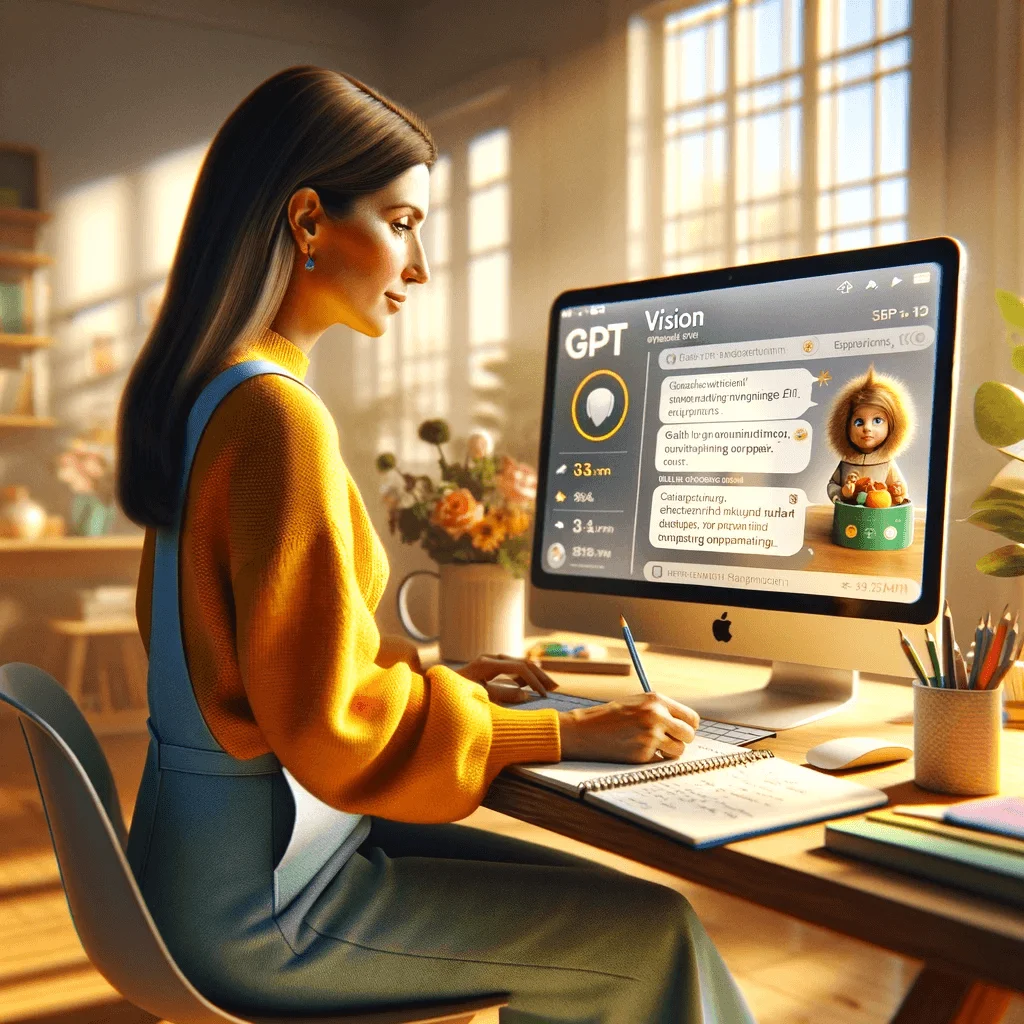
I want you to keep in mind as you read, that these new AI tools and possibilities I’m sharing with you are not about replacing your expertise and knowledge as an educator; it's about enhancing and better supporting it.
This tool really does provide the capacity needed for faster discoveries and interpretations, but it lacks the intuition, emotional intelligence and pedagogical knowledge that you bring as an educator.
By combining AI analysis with your own detailed observations and reflections, together with your knowledge of each child’s interests, home culture, relationships and developmental needs, you gain a more holistic view of the child and their learning.
About now you might be thinking - " yeah Jodie…it sounds fancy, but how can this support me in my particular early childhood education role?"
Let me reassure you that whether you're an educator in an early learning centre, preschool, family daycare setting or even teaching K-2 in a primary school setting, there is a way you can personalise this tool to your educational needs and framework or curriculum requirements.

So let’s explore some realistic examples of how ChatGPT Vision can support early childhood professionals like yourself...
How Can Educators Use ChatGPT Vision AI?
To Analyse Observations & Children's Work Samples
Ever find yourself looking at a child's artwork and wondering about the deeper meaning or the developmental milestones it might be touching upon?
With ChatGPT Vision, you can now get an instant analysis. - a bit like having an educational tutor or consultant looking over your shoulder to give you the guidance you need.
Let’s break this down with a realistic example so I can help you to visualise the possibilities:
You’ve observed a child drawing something specific like the image of Tara’s platypus below and when looking at this artwork, you try to recall the stages of drawing you learnt years ago during your early childhood studies so you can include this information in your analysis….
Or perhaps you find yourself struggling with what EYLF outcomes you should connect with…
…. Maybe you just need some play-based activity ideas that will help you plan experiences that extend on this child’s current interest in mark marking or a shift to a new drawing stage.
With ChatGPT Vision, you can get meaningful analysis and fresh extension ideas to support your forward planning and intentional teaching.
Let’s see how by using Tara’s drawing as an example:
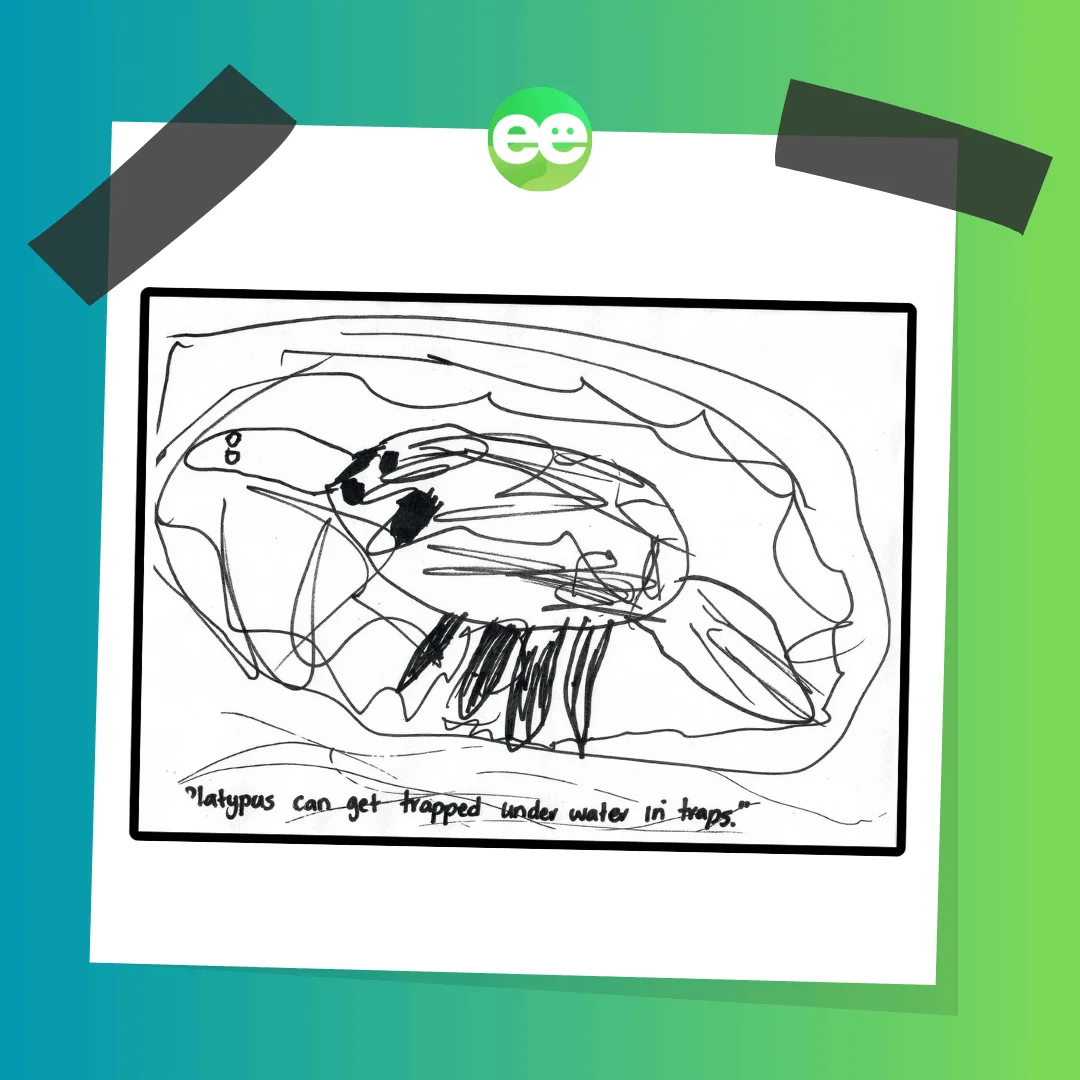
Drawing by my 3 year old daughter Tara
Prompt The AI To Analyse Developmental Skills & Progress...
Prompt The AI To Interpret The Content...
Prompt The AI To Expand On Learning Opportunities and Extensions...
Prompt The AI To Expand On Literacy and Numeracy Indicators...
Prompt The AI To Reflect & Brainstorm Next Steps With You...
Asking these types of questions not only helps you as an educator gain a deeper understanding of the child's current developmental stage and interests but also guides you in planning meaningful learning experiences that are more tailored to the child's unique learning journey…in a lot less time so you can get on with actually DOING it instead of just writing about what you’re GOING to do and WHY.
In Action Example - What Happens When I Ask GPT?
In Action Example - What Happens When I Ask GPT...
...To help me improve engagement and learning opportunities in the sandpit area?
Here’s a few responses I received back from the AI Assistant so you can see what’s possible and just how helpful this type of information can be to ensure you can take action faster…rather than being stuck trying to think of ideas or procrastinating until you feel ‘inspired’.

In Action Example - What Happens When I Ask GPT...
...To give me some ideas, tips and inspiration for this collection of natural open ended materials I want to reintroduce or present in different ways to increase engagement.
Although this is a very simple example - try and think about what you might find useful in the context of your own setting and the children you work with.
Perhaps you want to know if they are age appropriate...
Or maybe you want some fresh ideas for making them available for self selection in your play spaces...
You might be looking for some inspiration to add them into the play based activities you've already planned because they relate to a child's interest...
Take a look at a few questions I asked based on the following image...and the responses I received.
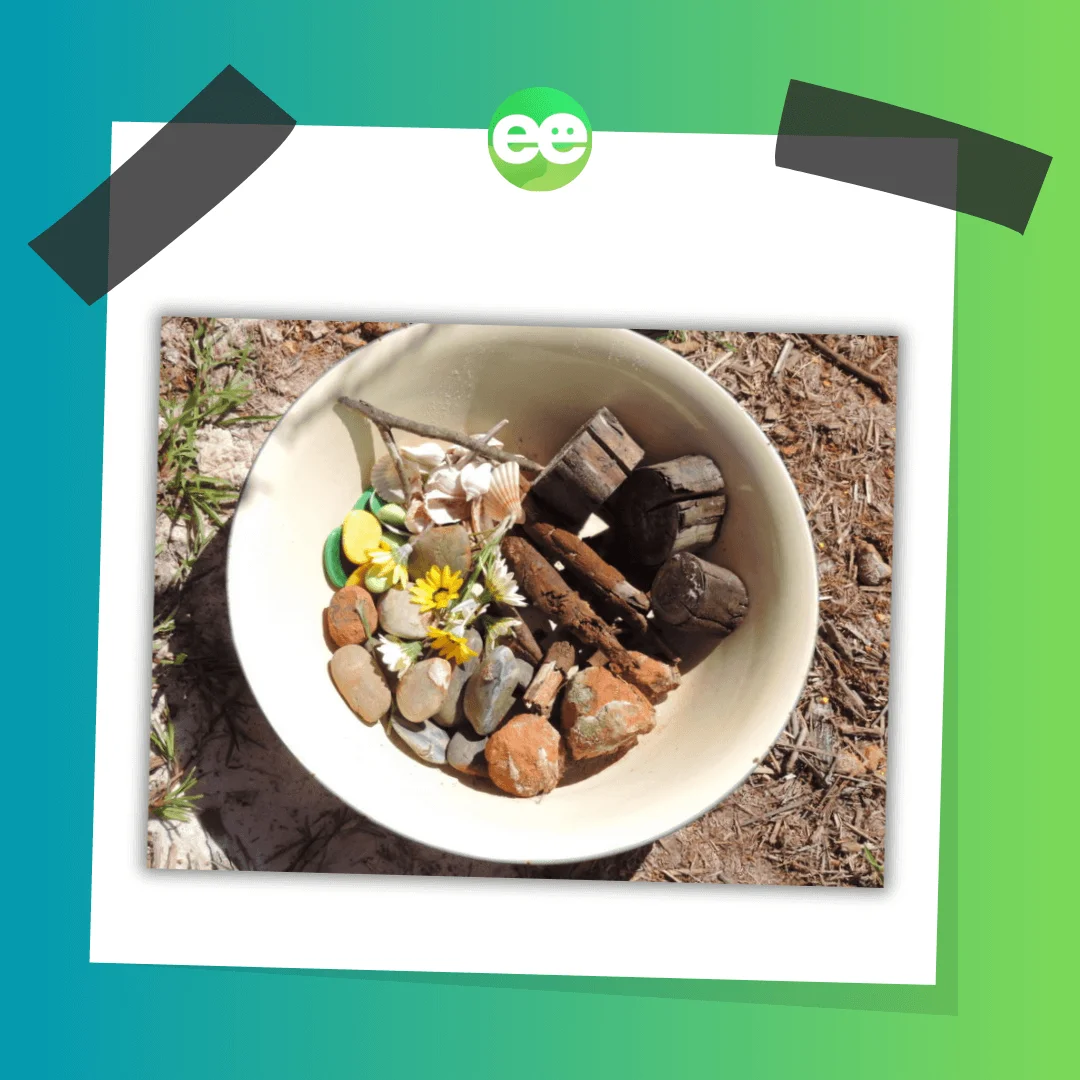
Supporting Individual Learning Journey's With AI
When used alongside your own expertise in this way, AI analysis gives you a fuller picture of each child’s learning and development.
Every drawing, every play setup or interaction, every little detail, can tell us so much about a child's development.
With the power of ChatGPT Vision combined with your expertise and the guidelines of the Australian Early Years Learning Framework, you can get a clearer picture of where a child stands in their individual learning journey. It's not about creating a report card, but understanding, supporting, and guiding their early learning more meaningfully and effectively.
Incorporating a tool like ChatGPT Vision into your educational practice might seem like a leap but think of all the moments when you wished for an extra pair of eyes, another perspective or just a nudge to help you get started with that analysis or coming up with suitable extension activities.
This is your chance to embrace that additional support.
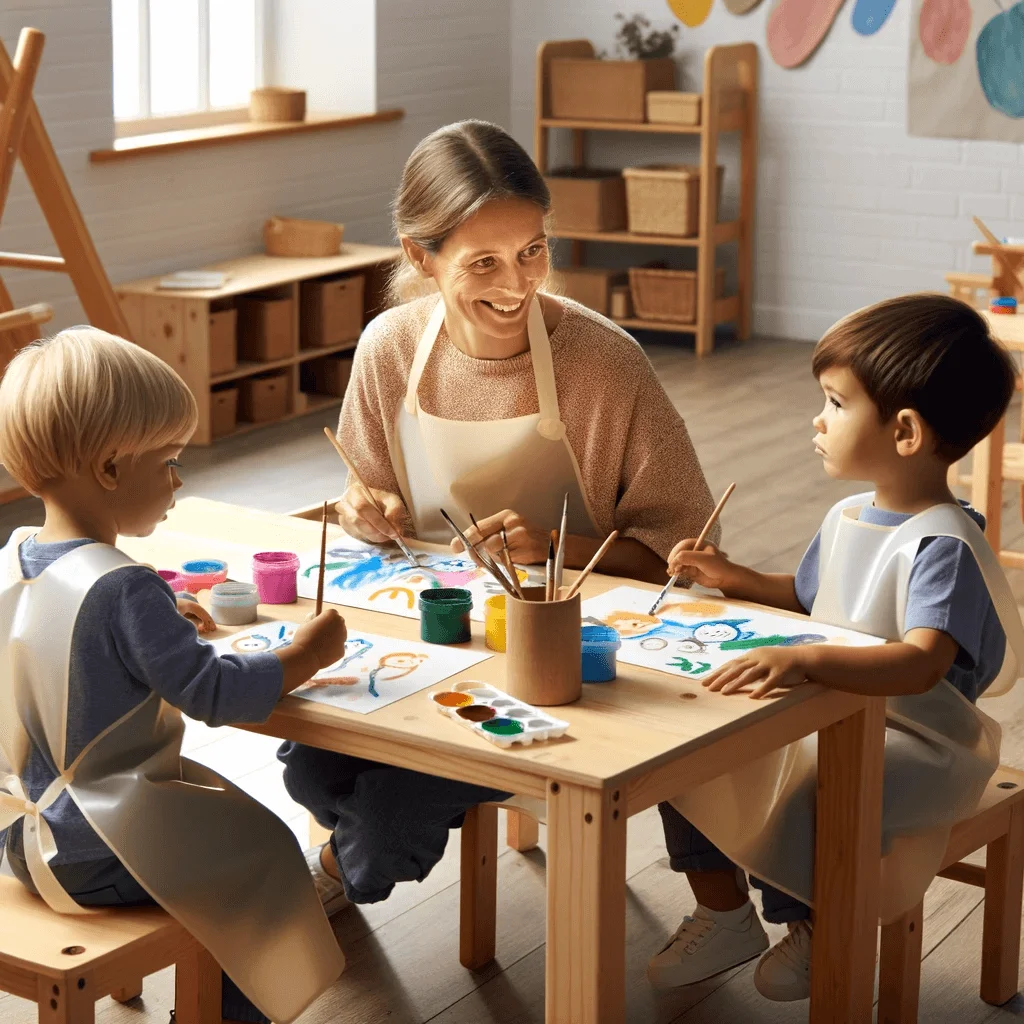
The Platypus Drawing: A Case Study
Earlier, I showed you an interactive example that highlighted the strengths of using AI tools in our early learning environments. We took a close look at Tara's drawing of a platypus and explored how ChatGPT Vision analysed it based on our questions and conversation iterations.

Drawing by my 3 year old daughter Tara
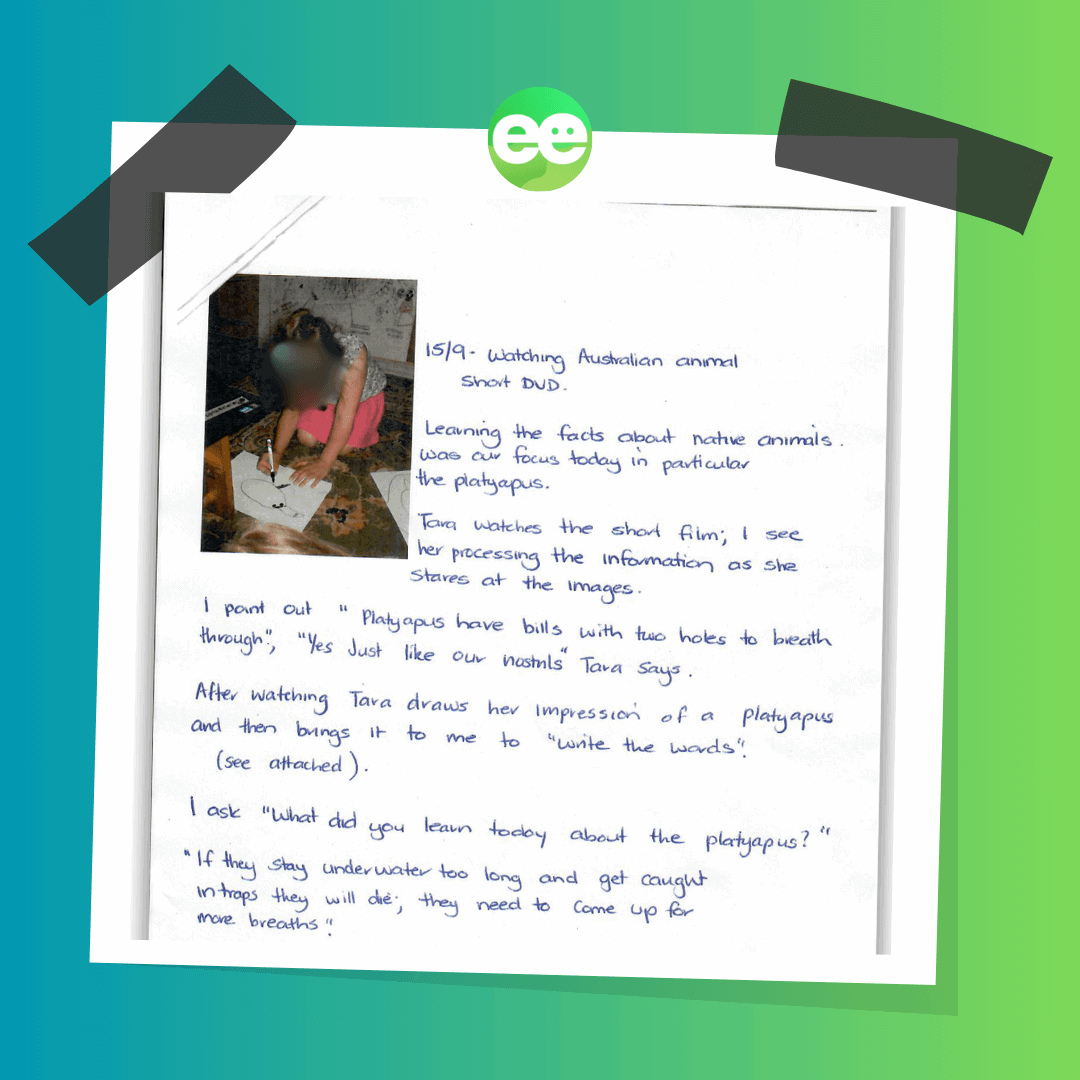
Observation features my daughter Tara 3 years
However, when I tested this example before I recorded it for you to watch I was reminded of the limitations that exist when using these tools and the absolute importance to always check an AI Assistants response against your own knowledge, expertise and awareness as an educator. An AI response can be very helpful but you must be mindful to always be the expert. You have the final say on what is helpful and what is not for both your planning and the child.
The feedback I was given initially leaned towards the 'scribbling' stage of drawing development as seen in the image below...
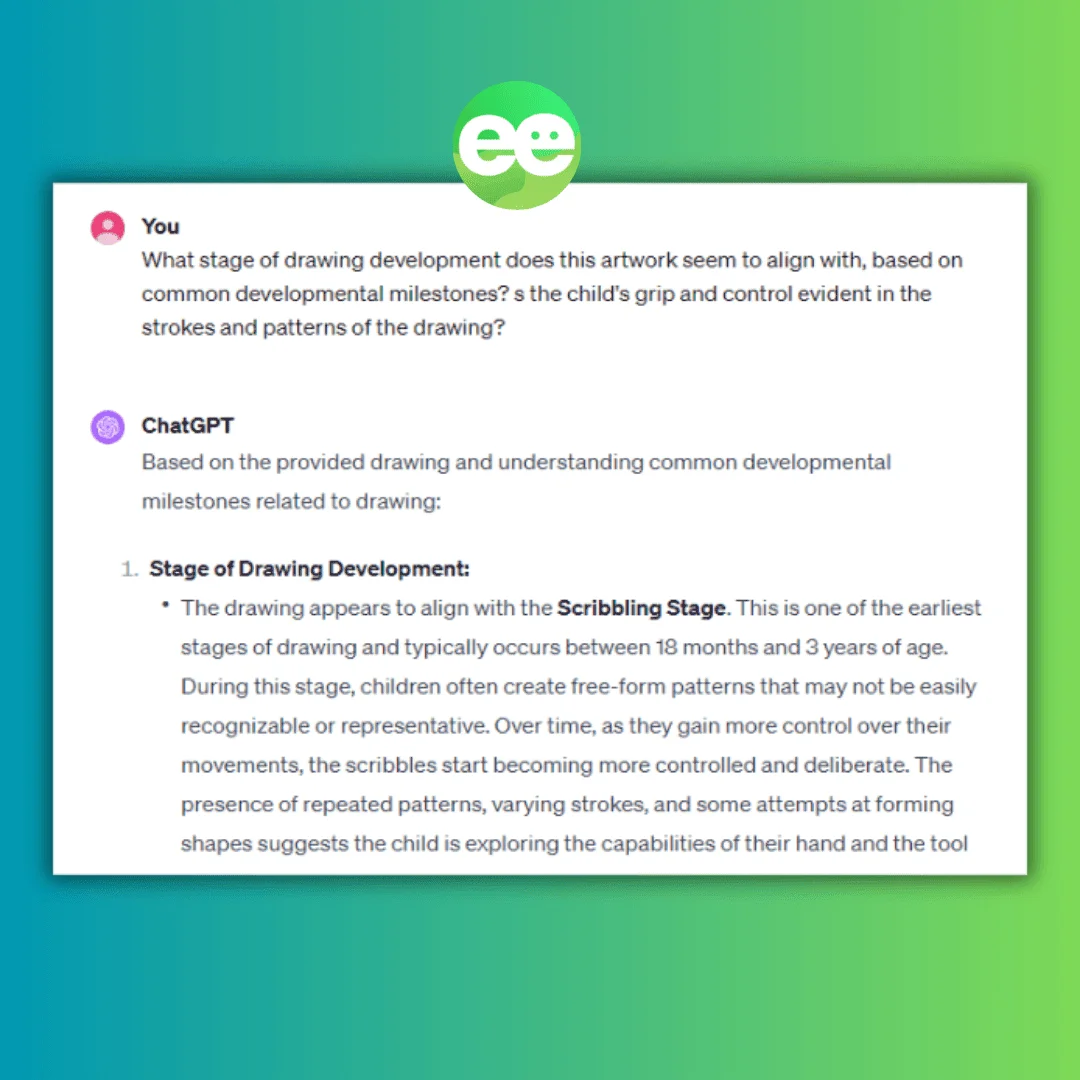
However, with my early childhood experience and knowledge of the child, I was able to recognise that Tara's artwork actually aligns more with the 'named scribbling' stage so I asked GPT to reflect on this…
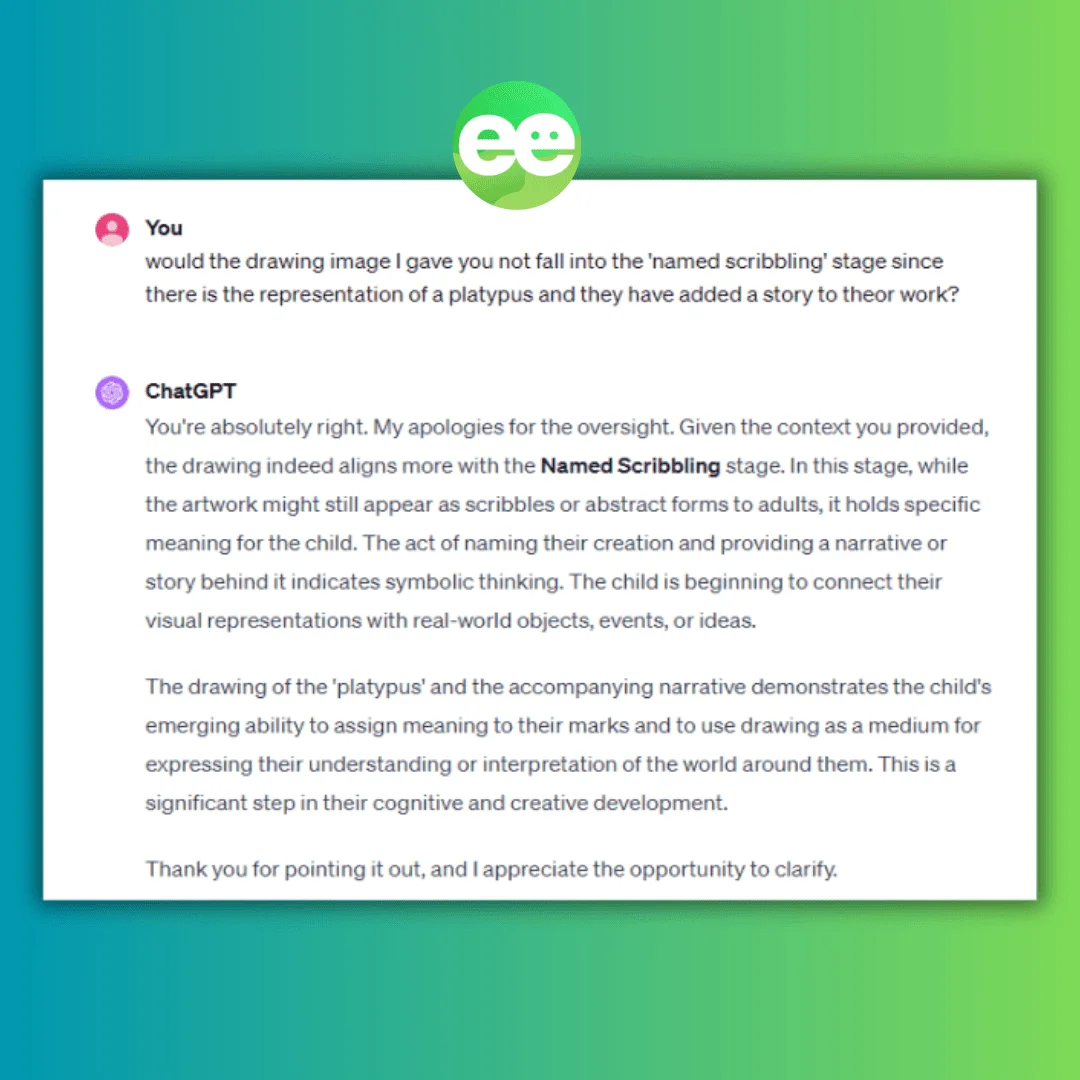
This example perfectly underscores the importance of combining the observations and perspectives of AI with the expertise of educators and our knowledge of early childhood development, practice and theory.
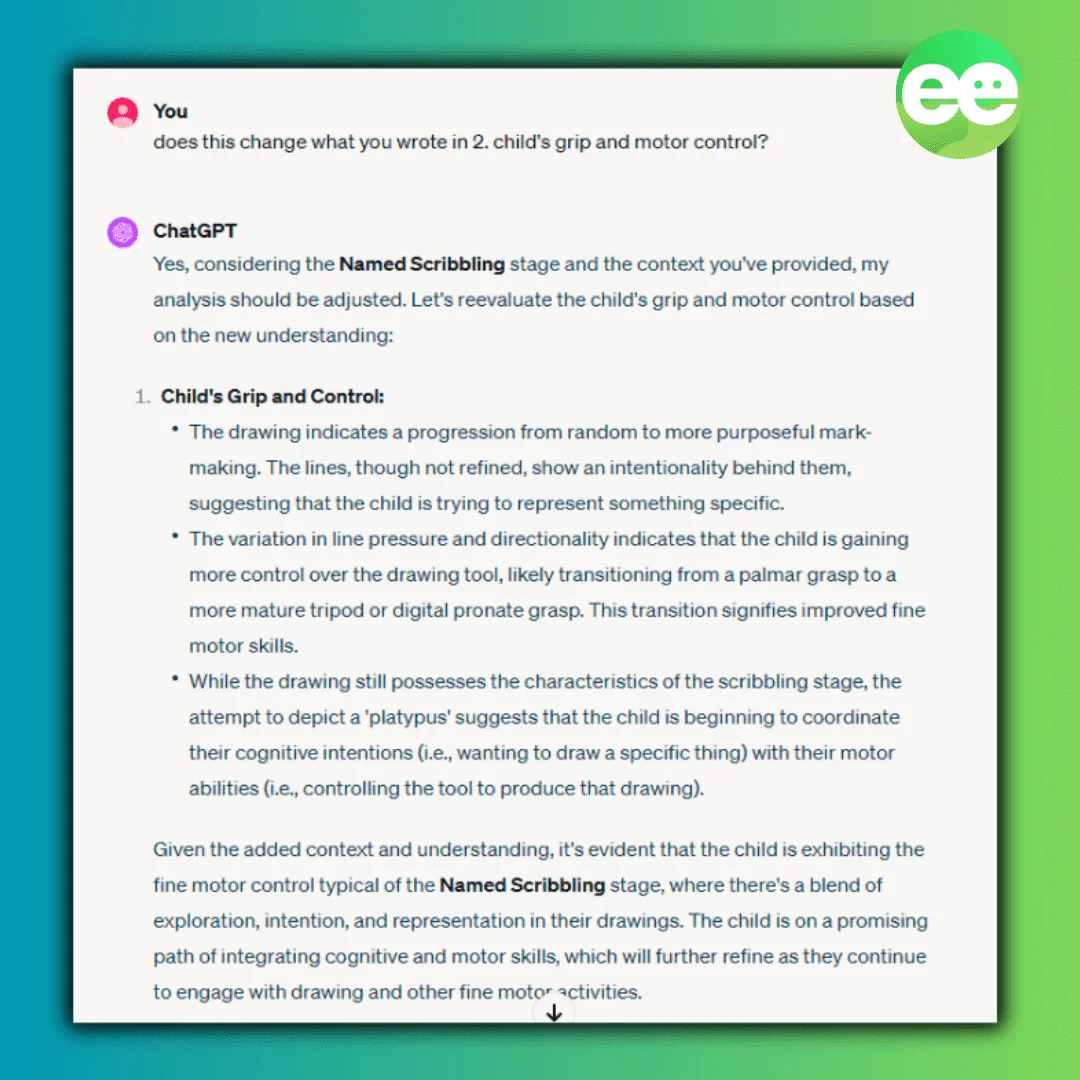
Although ChatGPT Vision pointed out some of the motor skills shown in Tara's drawing, it was our back and forth, reflective conversation that really deepened my understanding of where Tara is developmentally and gave me the information I needed to analyse learning, connect to EYLF outcomes, plan extension activities and support individual learning journey's.
Using this insight I might write a simple analysis of learning that is also aligned with the EYLF outcomes like this:
In Action Example - What Happens When I Ask GPT...
...To interpret an observation of a child
**Ensure if uploading an observation that also inlcudes photos of the child with the text that you take measures to ensure their faces are not seen/blurred/covered to ensure privacy and confidentiality.
Some prompt ideas we might use for this image example:
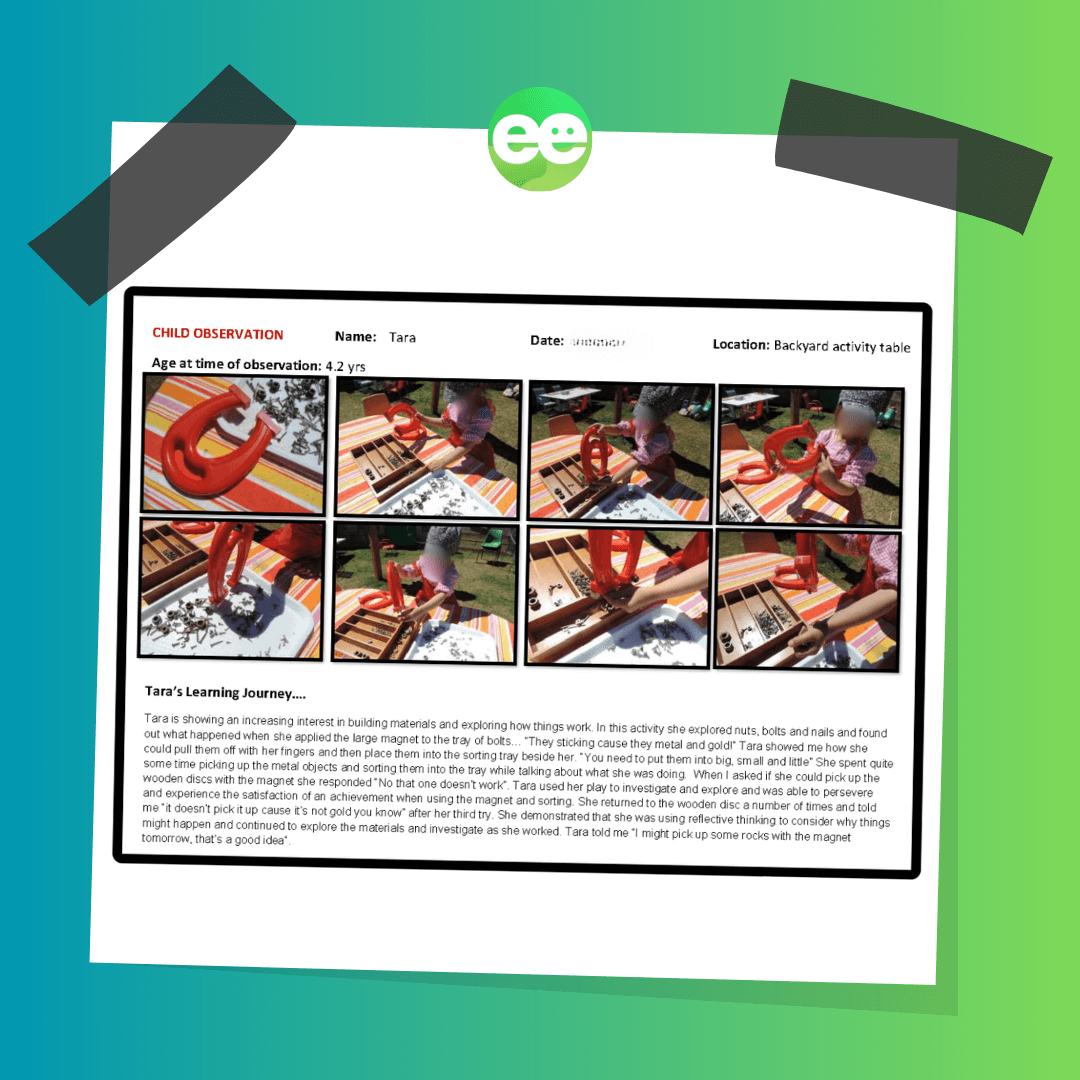
Observation & Photos are of my own daughter Tara
Academy AI Assistants & Mentors
If you’re using the Empowered Ed AI Assistants and Mentors inside the Academy then it’s even easier and faster for you because I've trained all of my AI Mentors to understand questions from early childhood educators and provide helpful information in the areas I know we need the most support…including aligning with and understanding the EYLF, developmental milestones, planning cycle steps, age appropriate activity/extension ideas, analysing learning, linking to outcomes, writing meaningful observations and so much more!
If you’d like to see more examples and understand more about how to prompt and use an AI Assistant like ChatGPT, you can register here for my on demand workshop and I’ll walk you through visually step by step.
Collaborate, Reflect, Extend : A Continuous Cycle
So ChatGPT Vision is pretty amazing, right? It can instantly scan Tara's drawing or a photo observation and share feedback on her learning. But its superpowers don't make our expertise any less important. If anything, having AI as our newest sidekick makes us even stronger!
Picture this: Tara draws a big bouncy kangaroo. Our AI bot friend could tell us about the shapes, lines, and story. However, we know Tara best. We'd notice if she draws kangaroos when she’s been jumping with joy, or that she colours them orange because that’s her favourite colour this week.
As educators, we have so many lightbulb moments watching children create, engage and play. Now, we can look to our AI Assistant to add some additional observations to our own.
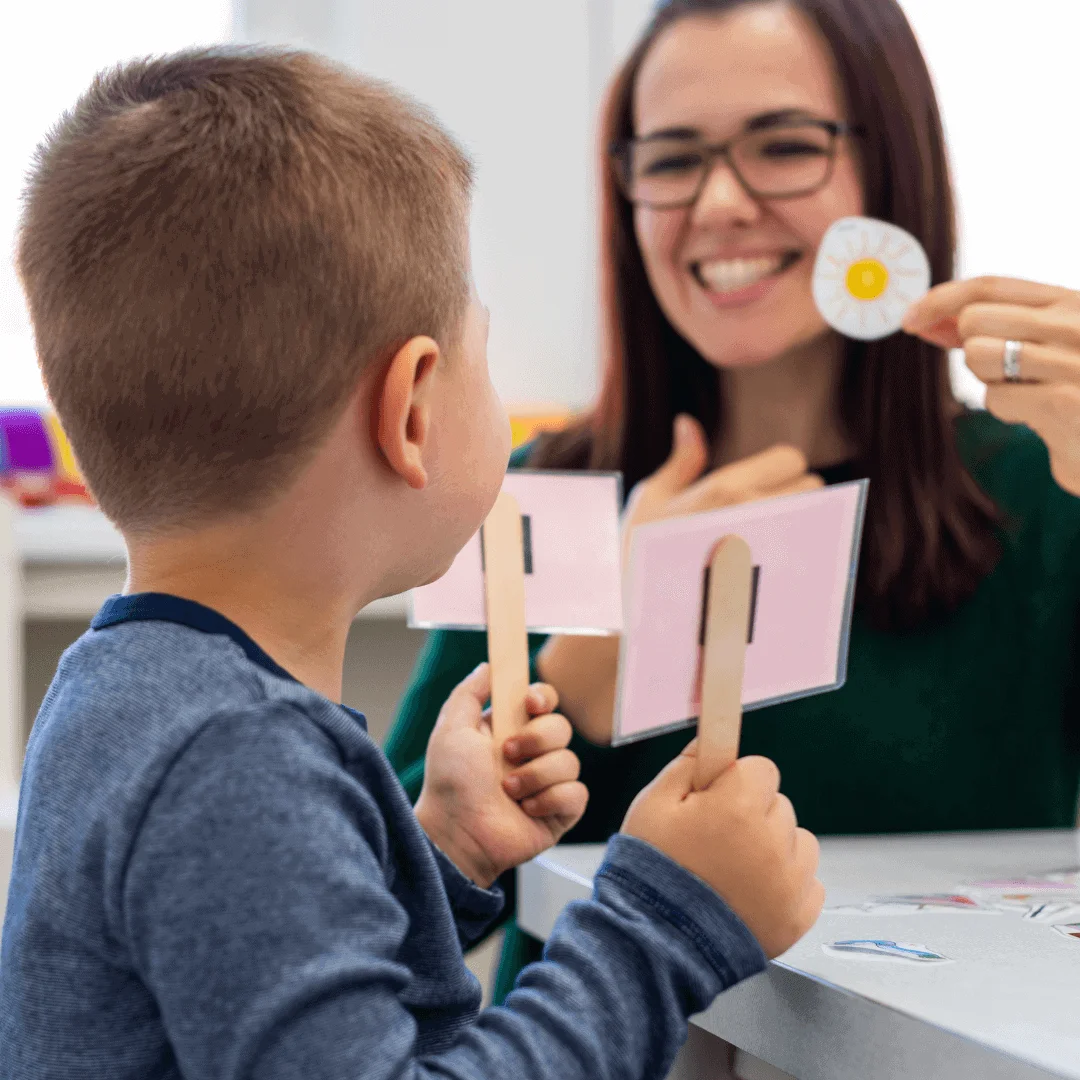
It's not meant to replace our voice, but rather to strengthen it. We stay in the driver's seat, guiding when to pause and reflect or when to nod in agreement.
And through this back and forth, we continue growing together - I don’t encourage just accepting the first answer the AI gives you - the real value occurs when you continue your conversation as if talking to another educator or reflective mentor.


jodie clarke - the empowered educator
I don’t encourage educators to accept the first response or feedback that an AI Assistant gives you in a chat - the real value occurs when you continue your conversation as if talking to another educator or reflective mentor.
Each new insight, whether from our AI assistant or our own expertise, pushes our thinking further. We can use that to provide the most thoughtful support for our childrens’ unique early learning journeys.
I personally think it's an awesome collaboration - the human touch paired with lightning-speed data.
With AI by our side as another support in our toolkit, we have even more tools to foster those memorable “I got this!” learning moments.
Our early education settings become places where technology and people can learn from each other to help every child achieve better outcomes.

How Educators Can Strengthen Skills With AI
Together, educators and AI can make an empowering team.
Let's look at how both superheroes use their complementary strengths for the ultimate win…less overwhelm, better outcomes for children and more time to spend on the doing rather than the planning and writing.
AI Assistants Bring the Speed:
Our tech buddy sees patterns in a nano-second, giving us rapid observations, reflections and analysis.
This superpower is so handy when we need to quickly recap progress for parents or plan intentional teaching activities while in the moment and following the child’s lead.
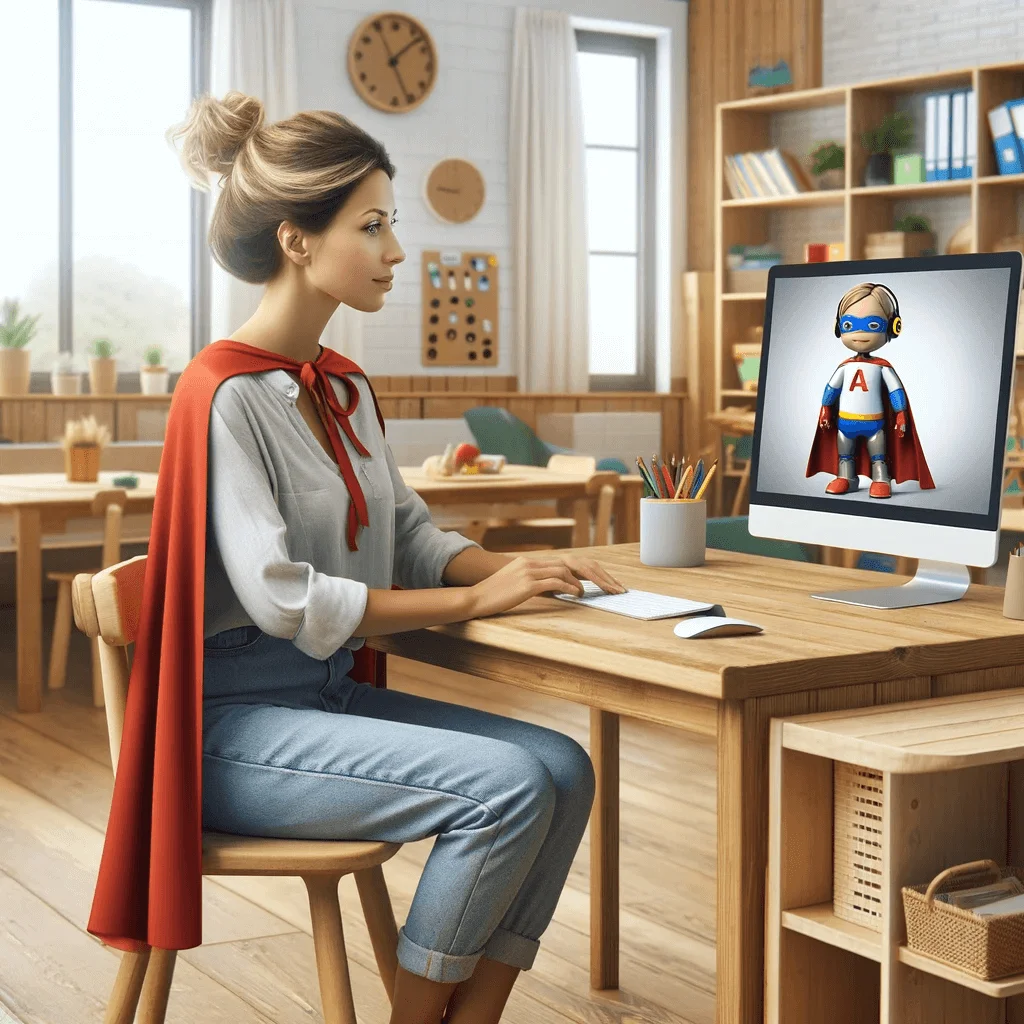
Educators Add the Experience:
But speed definitely isn't everything in early education. That's where we swoop in!
With our intuition and experience, we take AI's insights and add meaning, context and emotion.
Only we know that Alice loves purple right now and draws butterflies when she's feeling creative.
We understand the pride in Tony's eyes when he shares his latest block building engineering feat.
AI might miss these nuances, but they are a core part of our work and skill and always will be required.
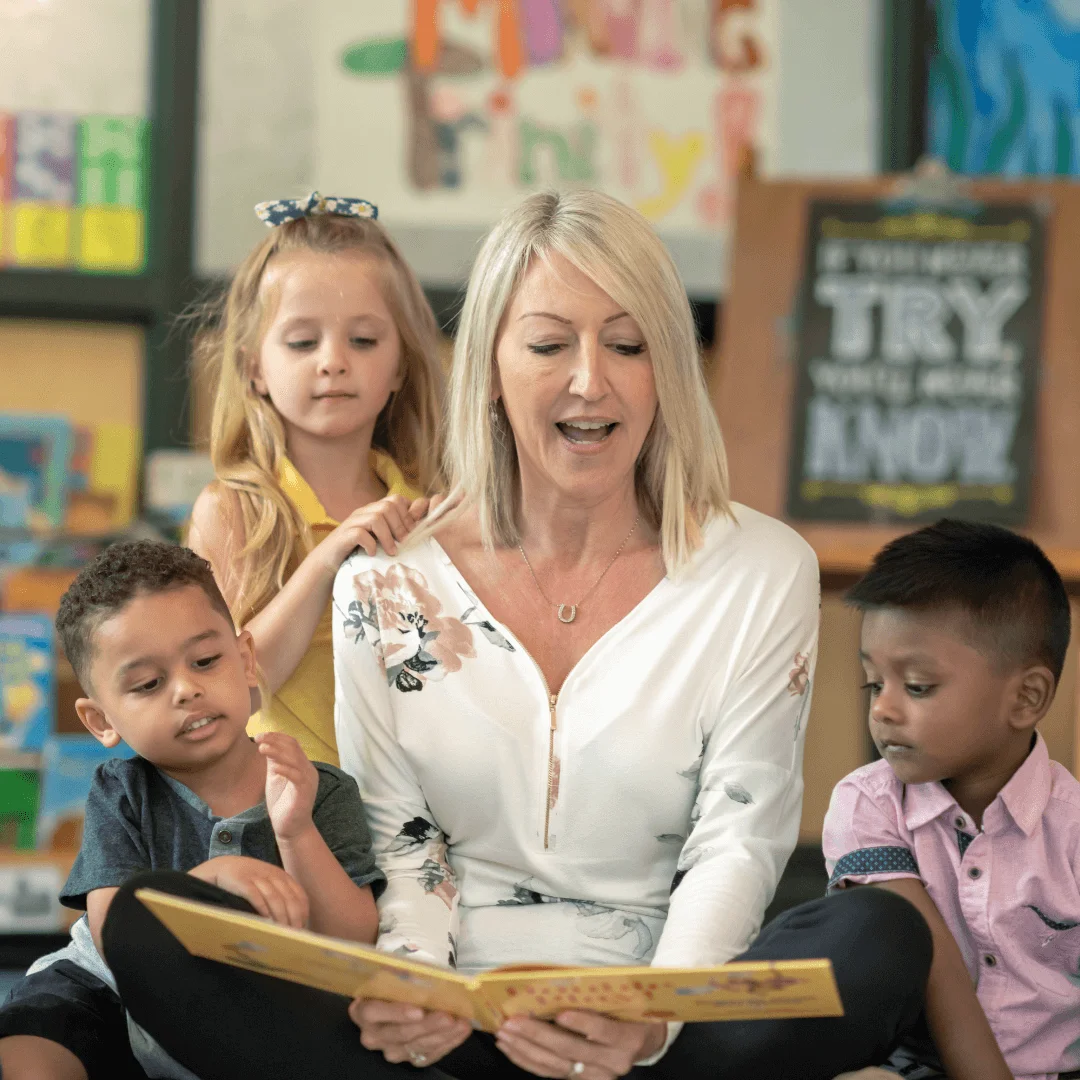
The Framework & Standards Double Check:
To make sure AI's suggestions align with education standards, we can simply cross-check them against recognised frameworks like the Australian EYLF (or whatever standards/frameworks/requirements you must follow in your part of the world).
This helps us take useful feedback but tweak activities to ensure they meet learning goals.
An Educators First Steps To Planning With Vision AI
I get that trying new and unfamiliar tech tools can make anyone feel a bit squirmy. But exploring AI ethically as a tool for good, to support the important work you do (not to mention your wellbeing!) is totally doable, even if you're an absolute artificial intelligence (AI) newbie!

Here are some tips to get you started on the right foot:
The ChatGPT Vision Quick-Start Guide:
2 Ways to Bring AI into Your Educational Practise
Documentation: Use ChatGPT Vision to improve your documentation process. Upload images of children's work, get quick but meaningful insights, and then add your own personal observations and interpretations.
Reflect with purpose: Ask ChatGPT thoughtful questions, then compare its answers to EYLF standards and your own expertise.
Approach using AI and tools like GPT Vision in your work as a new learning adventure, not an assignment to be completed or even as a race in which you have to become an expert !

AI Ethics in Education - What You Need To Know
AI opens exciting doors in early education, but also comes with important ethical implications to consider regarding privacy and confidentiality. When sharing images and data with AI, we must remain vigilant guardians of children’s privacy just as we do offline or when writing hardcopies.
Follow this checklist to help you ensure ethical AI practices:

The Human Educator’s Importance in the Age of AI
Amidst this wave of digital transformation, the human touch, spontaneous interactions of a child and the understanding of a trusted and familiar educator remains irreplaceable.
Consider this…
During an art session, an AI Assistant might indeed analyse Tara's drawing as a 'named scribbling' stage piece showcasing early symbolic thinking.
But what it won't capture is the pride in Tara's eyes as she presents her drawing, or the way her face lights up when she recalls her story about the platypus. It won't feel the warmth of her hand as she excitedly points to different parts of her artwork.
This emotional, human element is what makes a child feel a sense of belonging, acceptance and security.
It's the bond between educator and child, the familiar play spaces, the shared smiles, the comforting words during a tough day, or the collective giggles during playful activities.

And while AI will undoubtedly strengthen our educational practices, this human touch, this irreplaceable connection, will always remain central to the learning journey.
It’s a good thing we’ll soon be able to focus more on those important interactions and engagement with the children because our AI Assistant is helping us complete the paperwork part of the job faster!
Why wouldn’t we want to take advantage of that opportunity?
Let me know in the comments below if you're excited to try ChatGPT Vision...
Why I'm Uniquely Qualified to Guide Your AI-Driven Planning Journey…
With over 30 years in early education, I've worn many hats and understand the diverse challenges educators face, from planning and documentation to juggling a work-life balance. As a Certified ChatGPT Expert, I'm now focused on making these tasks more manageable through ethical AI use.
My aim is to simplify AI for educators, offering customised digital chat tools and helpful resources that make planning less overwhelming and more achievable.
The ultimate goal? To give you the freedom to focus on meaningful interactions and playful learning opportunities with the children.
Let's collaborate to use AI tech in simple ways that free up your time for what you truly excel at and enjoy!

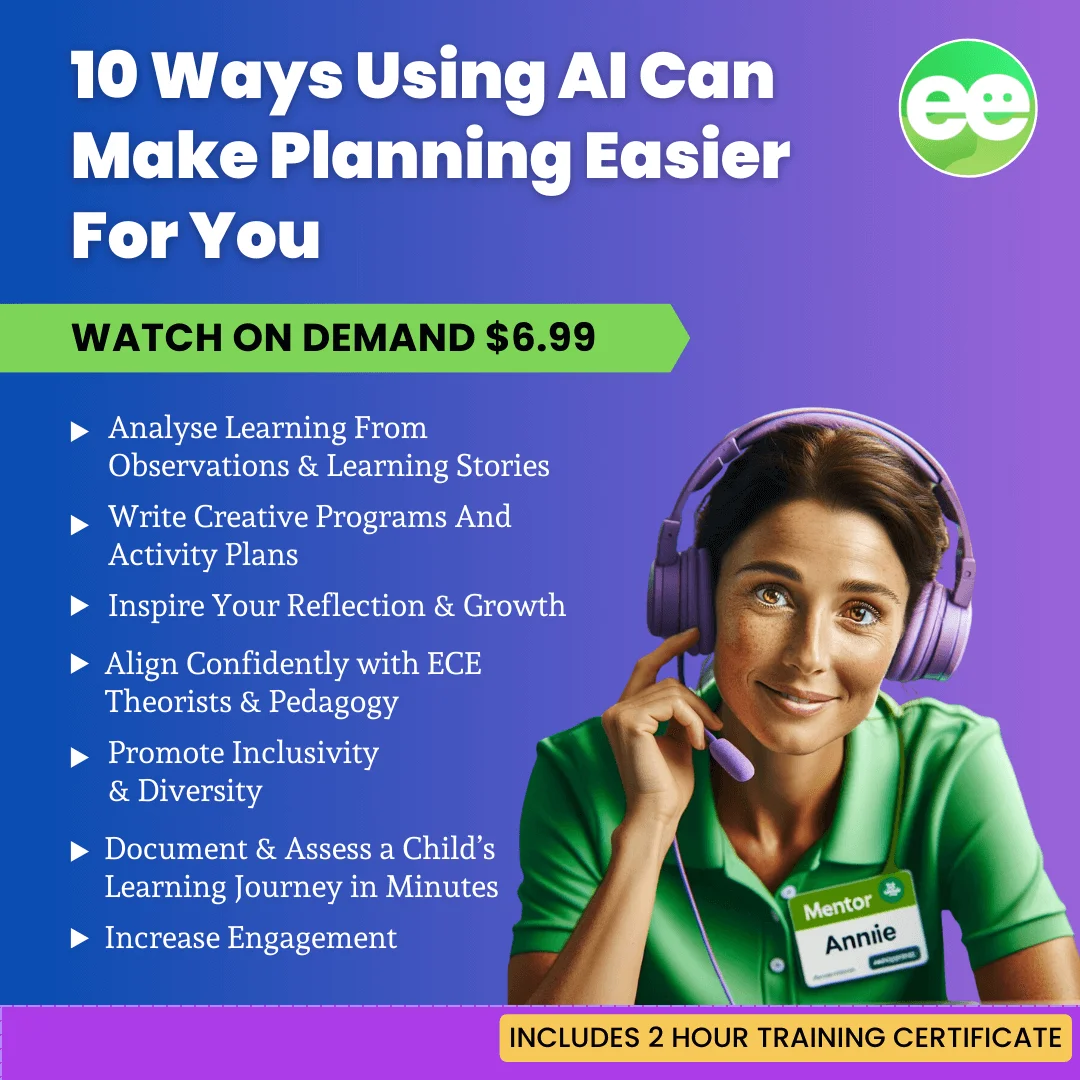
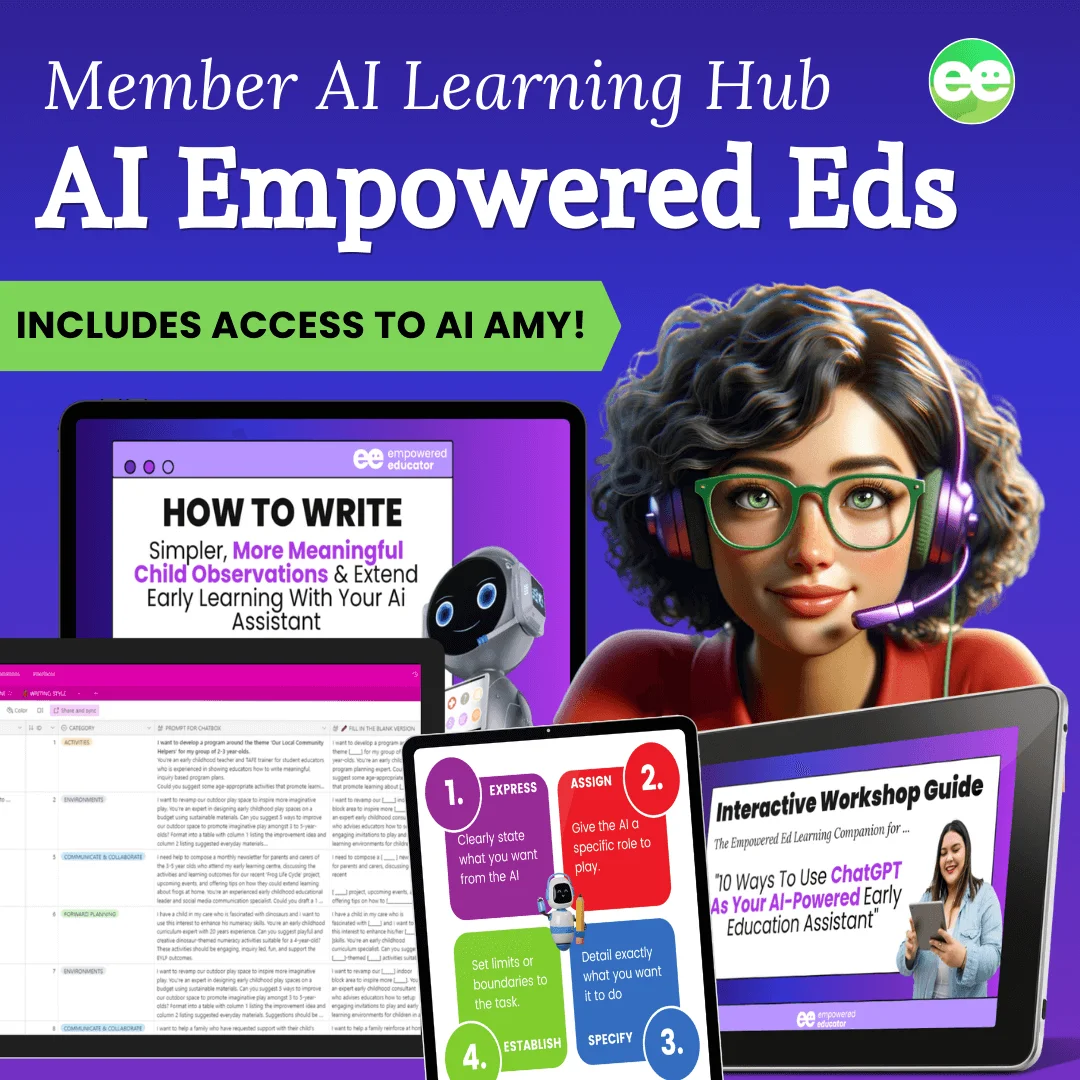
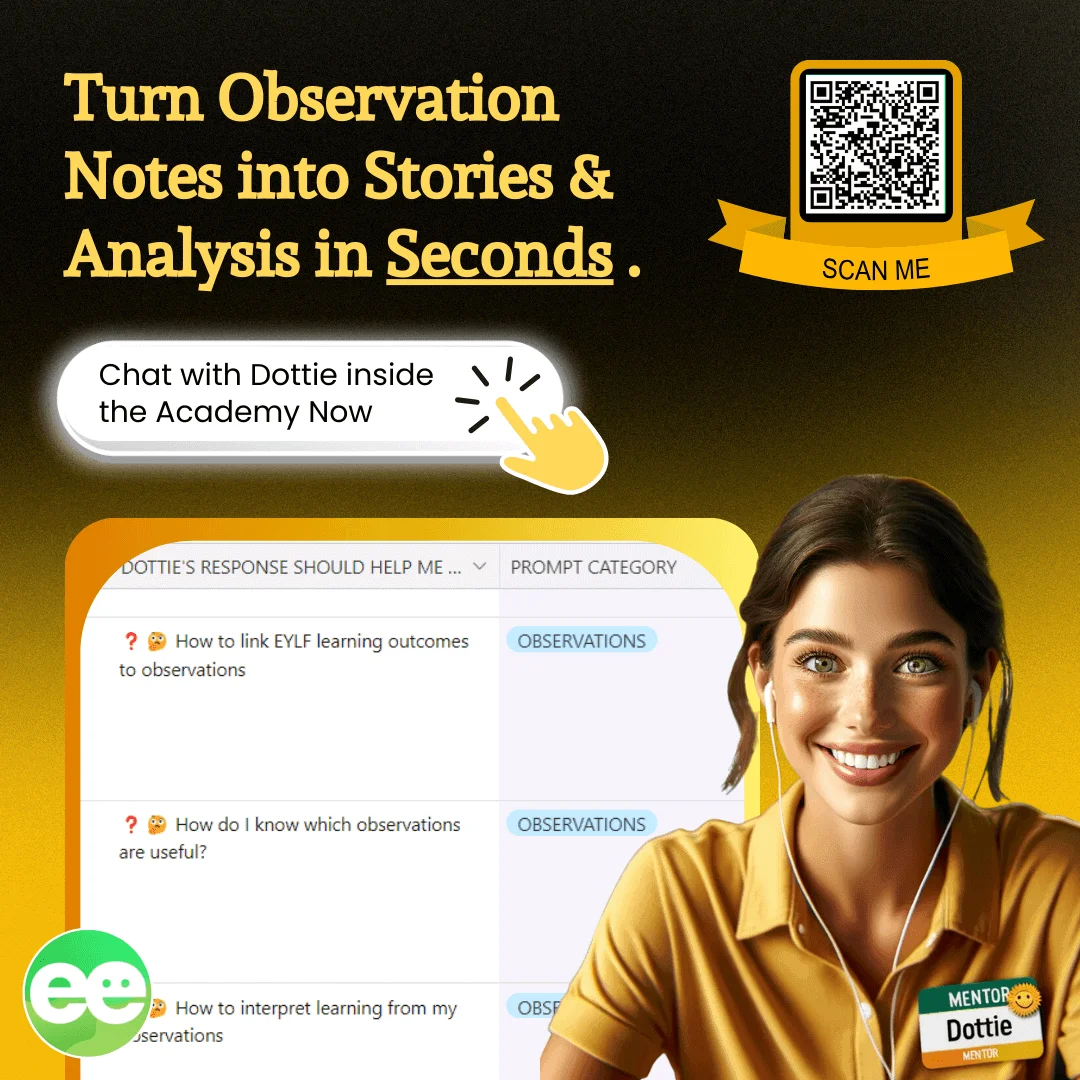
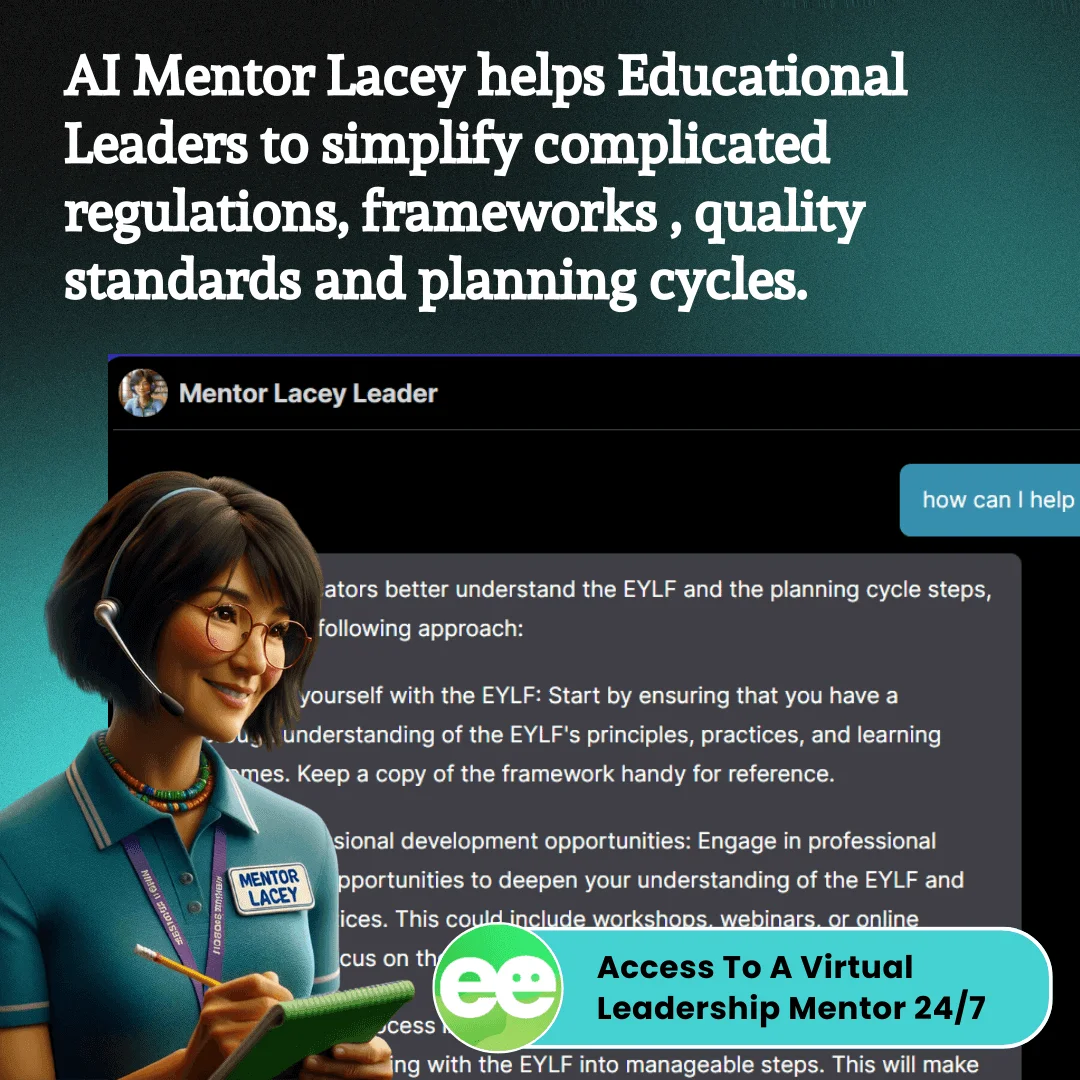
Leave a Reply